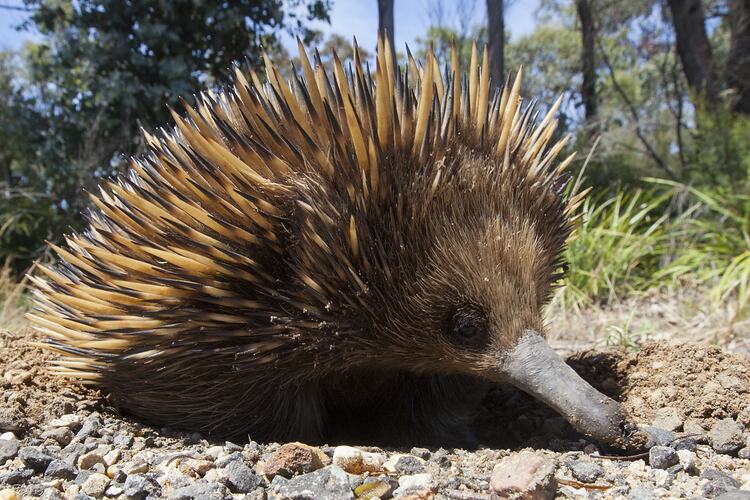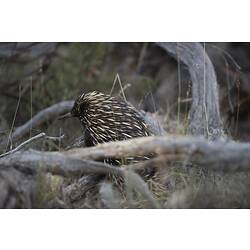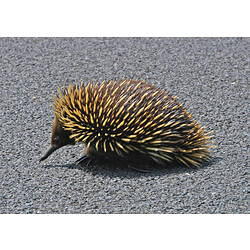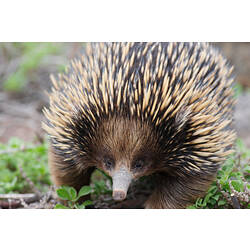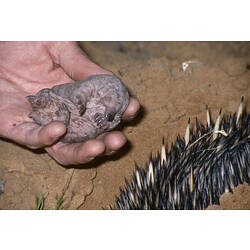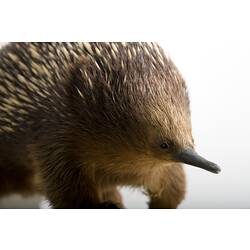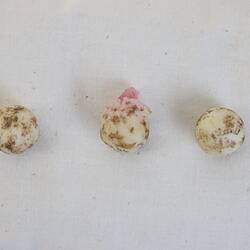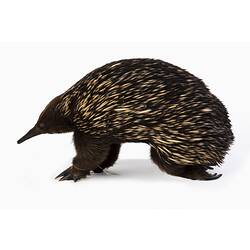General Description
Body rounded and covered in sharp spines, with fur between. Spines yellow-cream with black tips. Smooth tubular snout. Long sharp claws. Body up to 44 cm.
Biology
Short-beaked Echidnas have one of the largest ranges of any Australian mammal and are found in almost all terrestrial habitats. Short-beaked Echidnas capture ants, termites and other small invertebrates using a long, sticky tongue. They grind this food on horny plates in the mouth. Females lay eggs and feed their young on milk. They like to shelter in mulch piles and sometimes leave their babies in piles of leaves in people's backyards. They are often spotted at dusck but can be seen at any time of day.
Distribution
Mainland Australia and Tasmania.
Habitat
Range of areas, including forests.
More Information
-
Animal Type
-
Animal SubType
-
Brief Id
Spiny mammal with long snout.
-
Colours
Brown, Black, Orange
-
Habitats
Wetland, Urban, DryForest, WetForest, Woodland, Mallee, Grassland
-
Where To Look
-
When Active
Nocturnal, Diurnal
-
Diet
Insects
-
Diet Categories
Insects, Invertebrates
-
Endemicity
-
Commercial
No
-
Conservation Statuses
CITES: Not listed, FFG Threatened List: Not listed, EPBC Act 1999: Not listed, IUCN Red List: Least Concern
-
Taxon Name
-
Scientific Author
(Shaw, 1792)
-
Common Name
Short-beaked Echidna
-
Kingdom
-
Phylum
-
Subphylum
-
Class
-
Order
-
Family
-
Genus
-
Species Name
aculeatus
